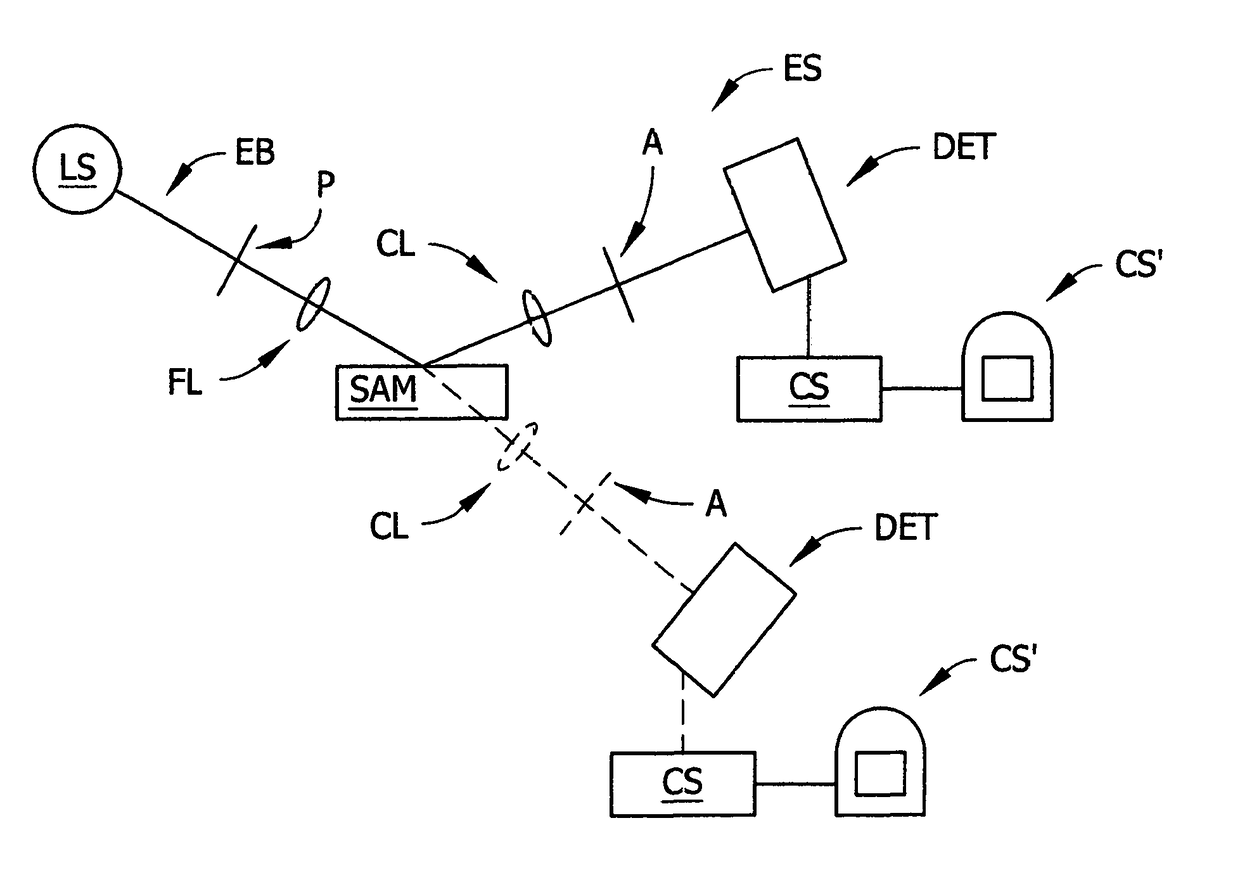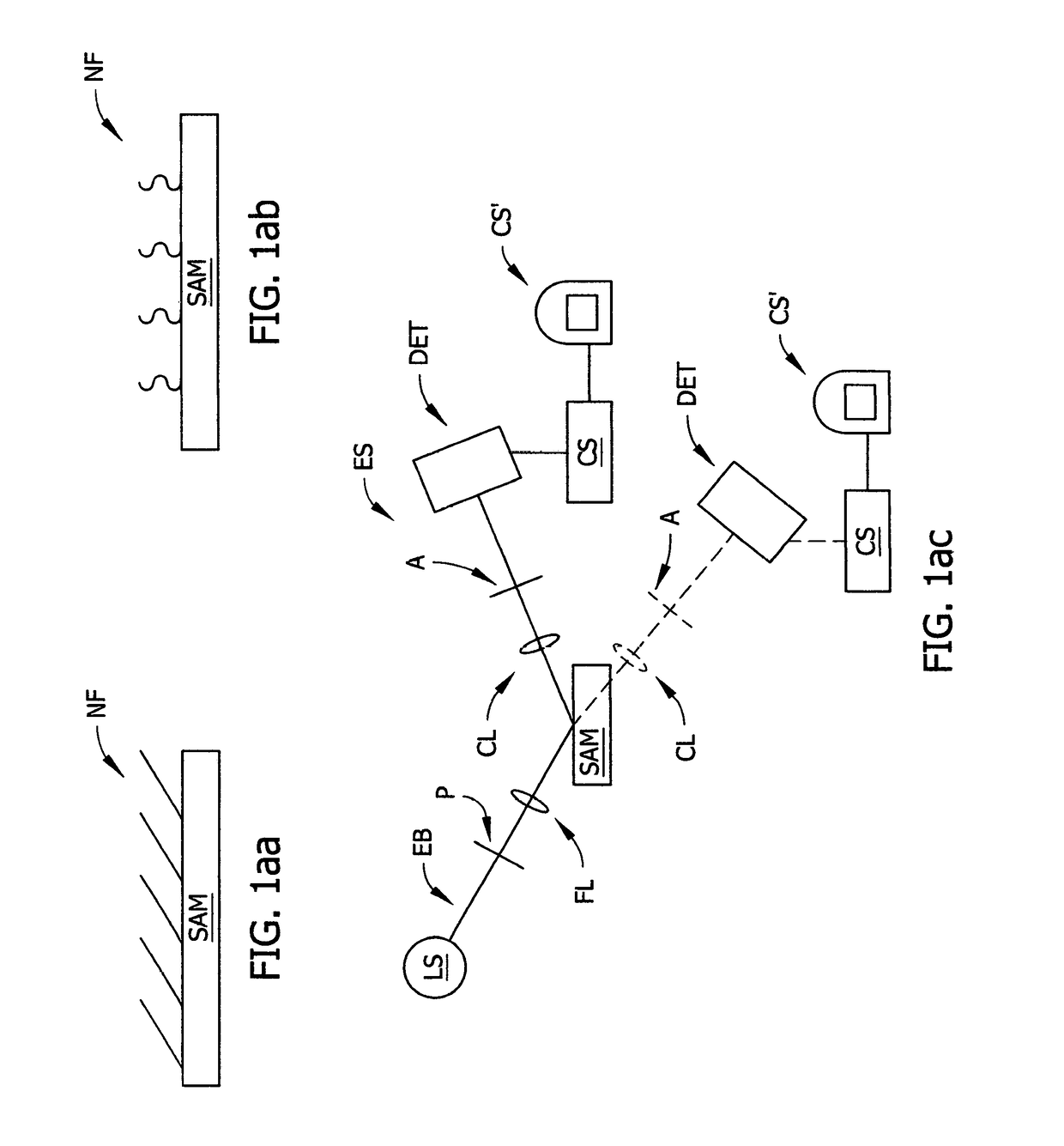Method of obtaining micrographs of transparent or semi-transparent specimens using anisotropic contrast
a micrograph and contrast technology, applied in the field of non-destructive methods for producing magnified images of samples, can solve the problems of limited design of such materials, inability to provide images of cells' interactions with local microenvironments, and destructive current imaging techniques
- Summary
- Abstract
- Description
- Claims
- Application Information
AI Technical Summary
Benefits of technology
Problems solved by technology
Method used
Image
Examples
Embodiment Construction
[0093]In contrast to traditional microscopy techniques where cells are commonly imaged on flat substrates, Mueller Matrix Birefringent Microscopy (MMBM) utilizes nanostructured, optically birefringent surfaces, which enhances image construction via substrate anisotropy, and this uniquely situates the present invention technique for the study of protein and cellular interactions on nanoscale features. In the present invention, birefringent substrates were fabricated by depositing titanium (Ti) Spatially Coherent Thin Films (SCTFs) onto reflexive silicon (Si) substrates. SCTFs are fabricated by Glancing Angle Vapor Deposition (GLAD) performed with oblique angle particle flux relative to the substrate, facilitated by electron beam evaporation. This approach results in highly ordered, highly coherent and controllable architectures ranging in size and shape from nano to micro scales, depending on the vapor flux angle and deposition time length. SCTFs provide enlarged surface areas, and e...
PUM
| Property | Measurement | Unit |
|---|---|---|
| thickness | aaaaa | aaaaa |
| thickness | aaaaa | aaaaa |
| angle of incidence | aaaaa | aaaaa |
Abstract
Description
Claims
Application Information
 Login to View More
Login to View More - R&D
- Intellectual Property
- Life Sciences
- Materials
- Tech Scout
- Unparalleled Data Quality
- Higher Quality Content
- 60% Fewer Hallucinations
Browse by: Latest US Patents, China's latest patents, Technical Efficacy Thesaurus, Application Domain, Technology Topic, Popular Technical Reports.
© 2025 PatSnap. All rights reserved.Legal|Privacy policy|Modern Slavery Act Transparency Statement|Sitemap|About US| Contact US: help@patsnap.com



